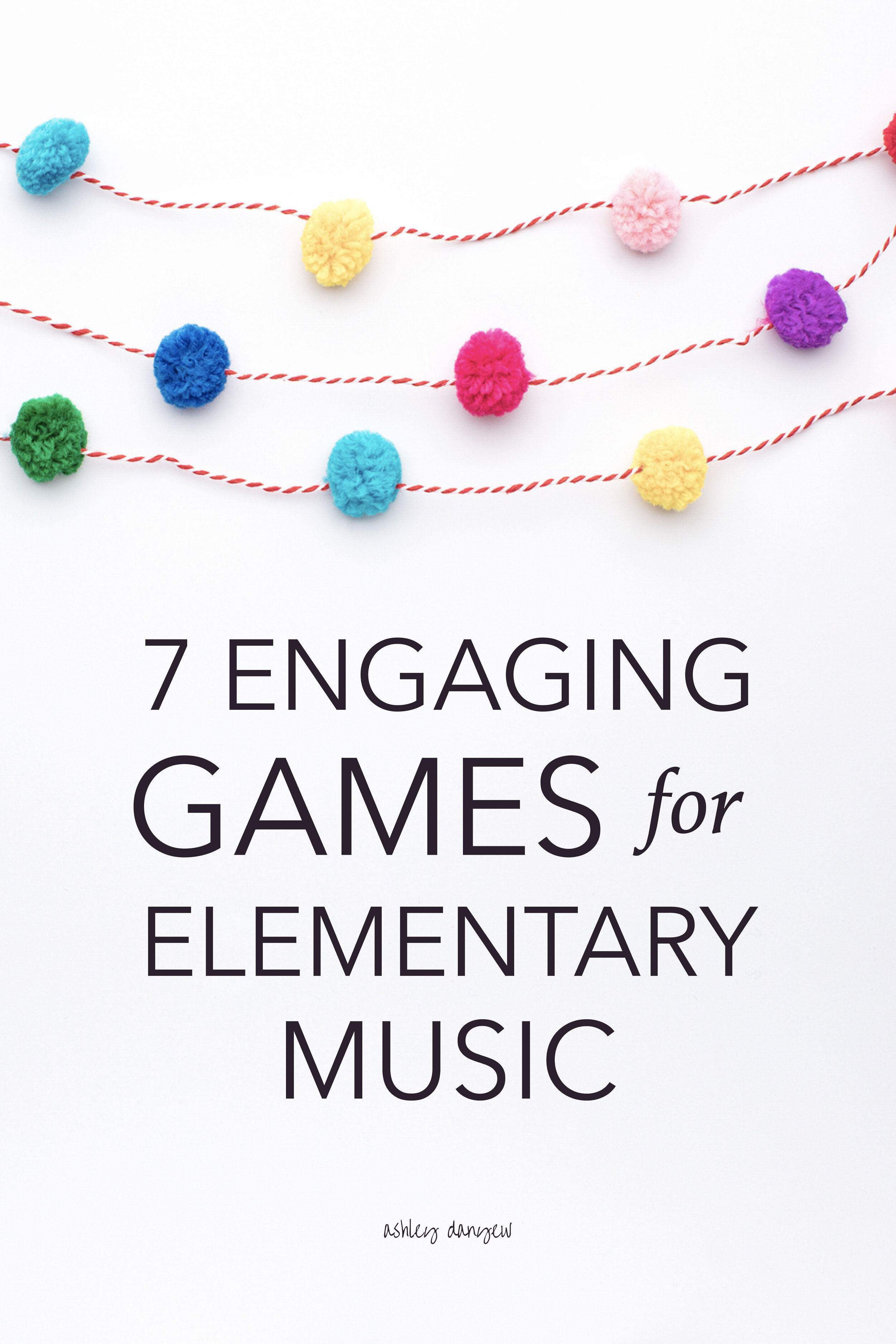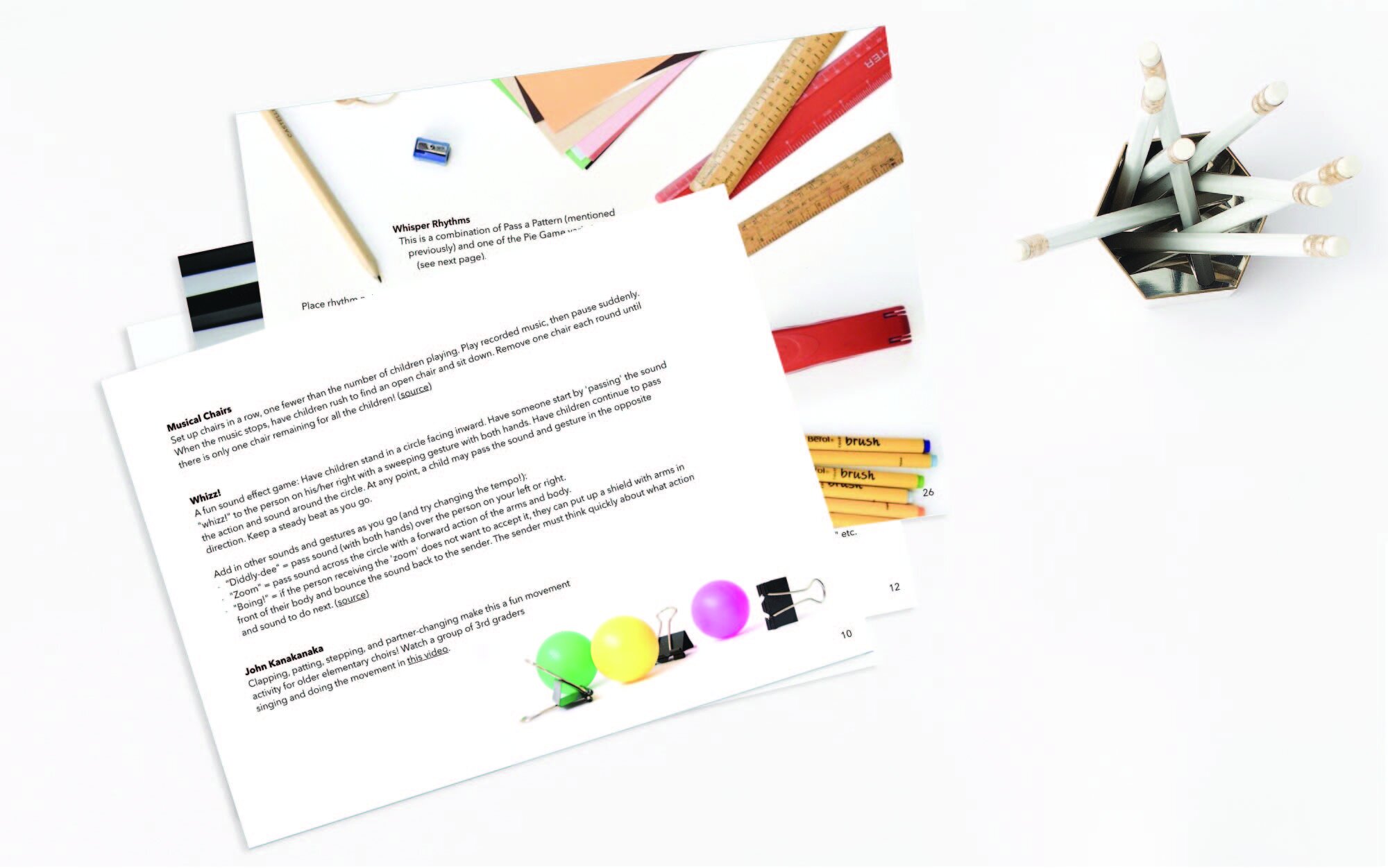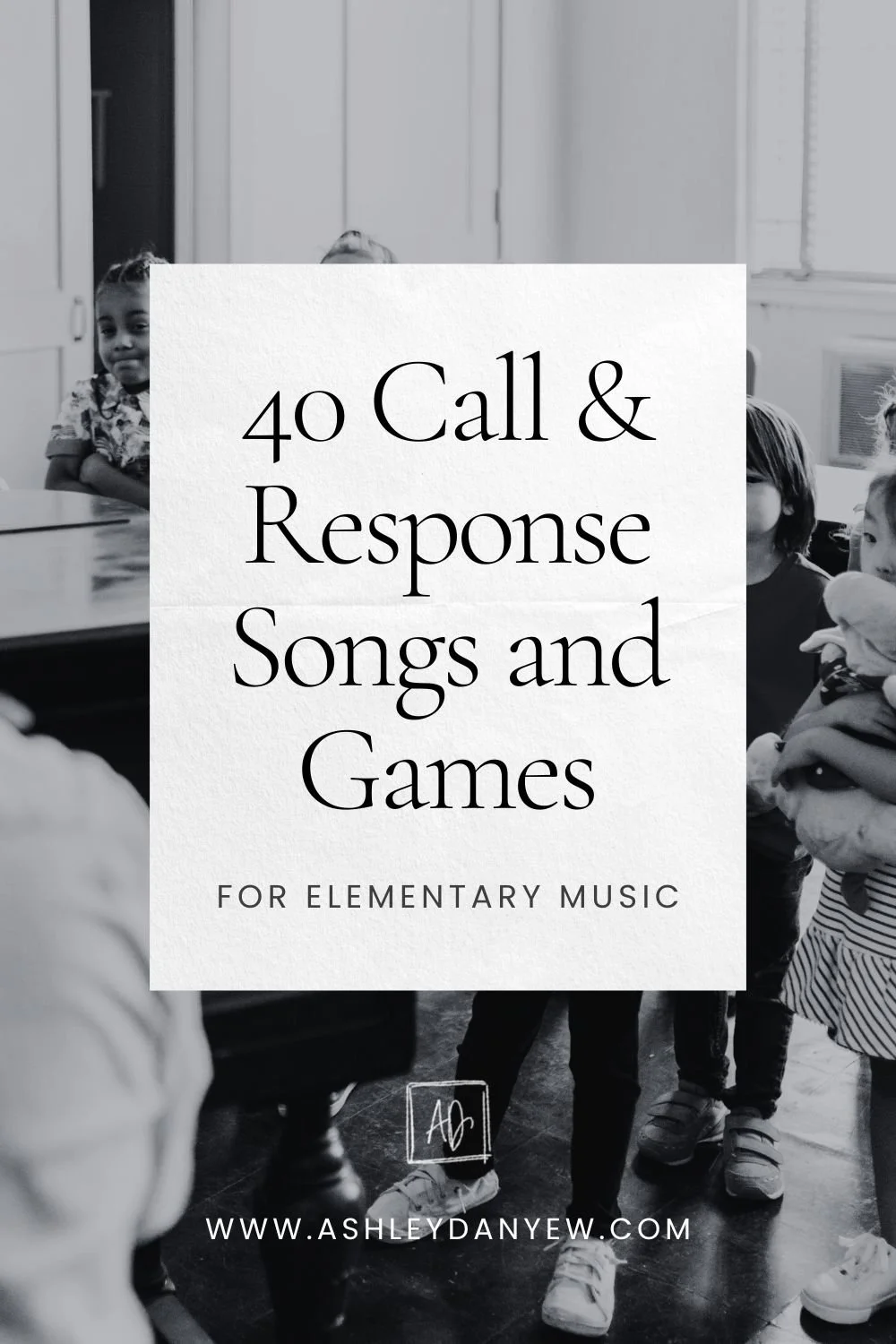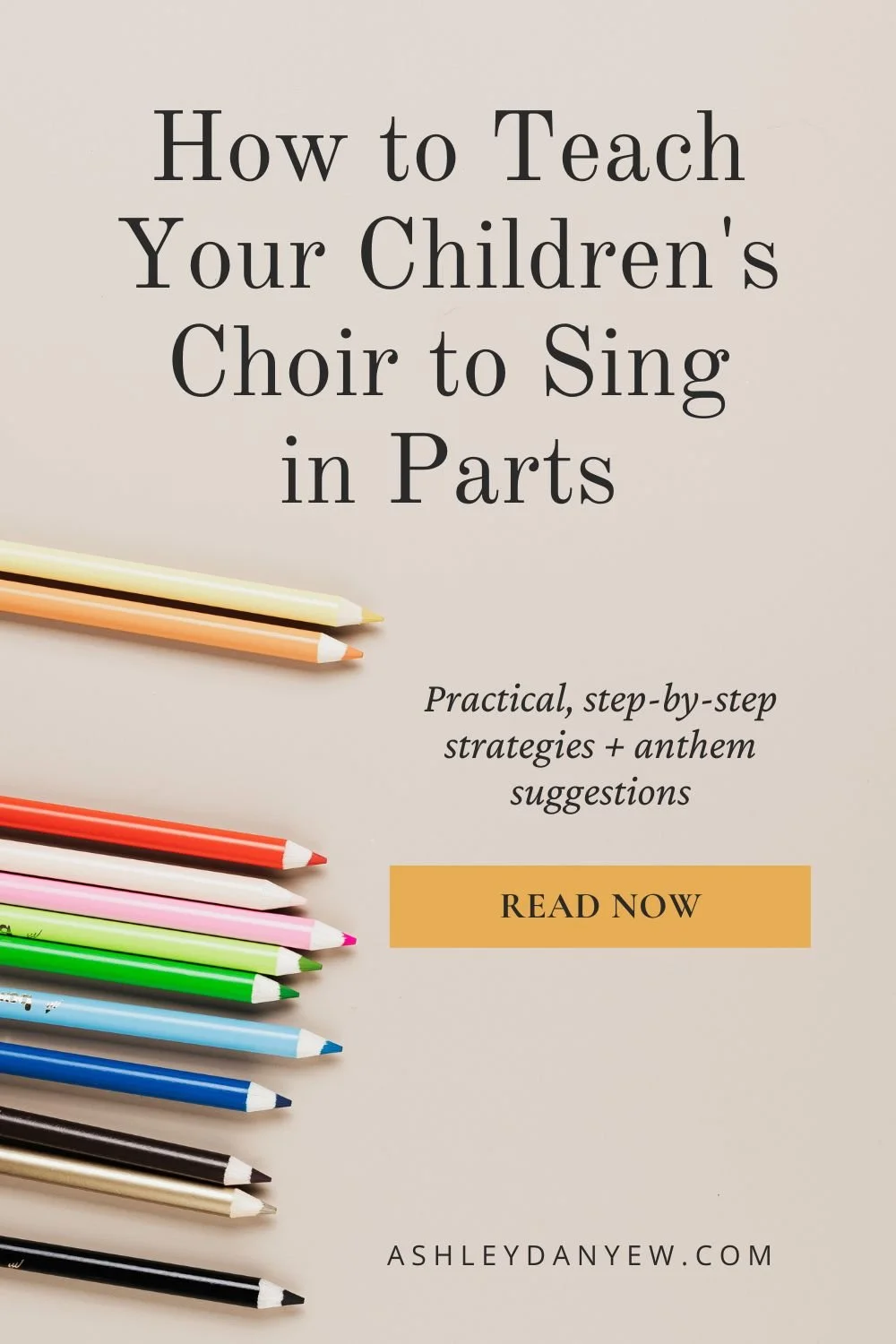Games and musical activities are a fun and engaging way to introduce and reinforce new musical concepts and develop musical skills like listening, singing, expression, coordination, and internalizing a sense of steady beat.
There are lots of games to choose from, but not all of them have a clear musical focus. When choosing games and activities for your students or choir, look for games and activities that keep the focus on music and integrate movement, listening, and active experience.
In this post, I'm sharing a few of my favorite musical games and activities for elementary music classes, children's choirs, and elementary group classes.
Enjoy!
7 Engaging Games for Elementary Music
1. The Cup Game
Rhythm, coordination, steady beat
This activity works well with songs in duple or quadruple meter and with 4-bar phrases.
What you’ll need: one plastic cup for each child, music (opt.).
To begin, place one plastic cup upside down in front of each child.
Beats 1-4: Clap two times. Hit the bottom of the cup three times (right-left-right).
Beats 5-8: Clap once. Pick up the cup and set it down.
Beats 9-12: Clap once. Pick up the cup with your left hand. Hit the top of the cup with your right hand. Hit the bottom edge of the cup onto the table or floor.
Beats 13-16: Switch the cup to your right hand. Tap the table or floor with your left hand. Set the cup down in front of the person on your right. Repeat. (source)
Once children have learned the sequence, try pairing this game with a song in duple or quadruple meter.
Working with younger children? Here's a simplified version.
2. Modified Musical Chairs
listening, movement, steady beat
What you’ll need: chairs (one fewer than the number of children playing), music (recorded or live)
To prepare: Set up a row of chairs facing in alternating directions, one fewer than the number of children playing.
To play: Play music (upbeat or lyrical, jazzy or impressionistic, live or recorded) and invite children to step the beat as they walk around the chairs. Then stop suddenly. When the music stops, have children rush to find an open chair and sit down (two children will share a chair). Remove one chair each round but don’t eliminate any players. By the end of the game, there should be only one chair left for all children! (source)
Try introducing a variety of musical styles during this game and vary your speeds so children can experience stepping the steady beat in several different tempi.
3. Pavo, Pavo (Spanish Turkey Song)
movement, form, steady beat
Sing this Chilean folk song with the original Spanish text.
To play: Invite children to stand in a circle with one child ("turkey") in the middle. During the first phrase (mm. 1-4), children move clockwise around the circle as the turkey struts counter-clockwise. During the second phrase (mm. 5-8), reverse directions. In the first part of the B section (mm. 9-12), children stand still, shaking their fingers at the turkey. During the last phrase (mm. 13-16), children in the circle remain still as the turkey closes his/her eyes, stretches out his/her arms, spins around, and points to a new turkey. (source)
4. Mama Lama
steady beat, movement, Improvisation
This is a great movement activity for young singers!
To play: Invite children to stand in a circle, singing and tapping their legs and the hands of those on either side of them. Call out children's names (or assign each child a number before you begin) to give them an opportunity to do a solo movement, stepping in toward the center of the circle (4 beats) and back out (4 beats). Have all children "echo" this movement during the next eight beats. See a video explanation of this activity here.
Related post: 10 Movement Activities for Children’s Choir
Learn how to lead and direct children’s choir creatively and confidently.
Join me in Directing a Church Children’s Choir 101, a 4-week online training program geared specifically toward children’s choir directors in church settings.
5. Boom, Snap, Clap
rhythm, coordination, musical independence
A fun hand game (source), this works well as a partner activity.
See a step-by-step video here.
Try having half the group sing a familiar song (duple or quadruple meter with 4-bar phrases) and half the group accompanying with the boom, snap, clap sequence. Then, switch parts!
6. Whizz!
steady beat, improvisation, coordination
This is a fun sound effects game (it goes by many different names).
To play: Invite children to stand in a circle facing inwards. Someone begins by 'passing' the sound "whizz!" to the person on his/her right with a sweeping gesture with both hands. Children continue to pass the action and sound around the circle. At any point, a child may decide to pass the sound and gesture in the opposite direction. Keep a steady beat as you go. Add in other sounds and gestures to the game as each one is performed with ease (and try changing the tempo!):
"Diddly-dee" = pass this sound over the person on your left or right with both hands reaching over the head of the person being skipped.
"Zoom" = pass this sound across the circle with a forward action of the arms and body.
"Boing!" = if the person receiving the 'zoom' does not want to accept it and pass it on, they can put up a shield with arms in front of their body and bounce the sound back to the sender. The person who sent the 'zoom' must think quickly about what action and sound to do next.
7. Mystery Song
listening, audiating, solfege
This activity reinforces inner hearing and solfege hand signs and it works well as a segue to repertoire at the beginning of class or rehearsal, especially if you use solfege and hand signs during warm-ups.
To play: Choose a familiar tune. Show children the hand signs for the melody (silently but in rhythm) and have them guess the song without hearing it. Invite them to mirror the hand signs with you. If they have trouble, give them the first pitch or two, continually adding pitches as "clues" until they correctly identify it. (source)
Looking for more ideas?
Download the free eBook.
This eBook features 62+ fun, creative, musical games for children of all ages, including step-by-step directions for how to play each game, plus links to video demonstrations, where applicable.
P.S. You might also like these posts:
15 Singing Games for Children's Choir
How to Plan a Children's Choir Rehearsal
Clap Your Hands: 16 Clapping Games for Children's Choir
10 Movement Activities for Children's Choir
Top 50 Favorite Anthems for Children's Choir
How to Teach a Children's Choir Anthem By Rote
5 Ways to Make Memorizing a Choir Anthem Fun






































